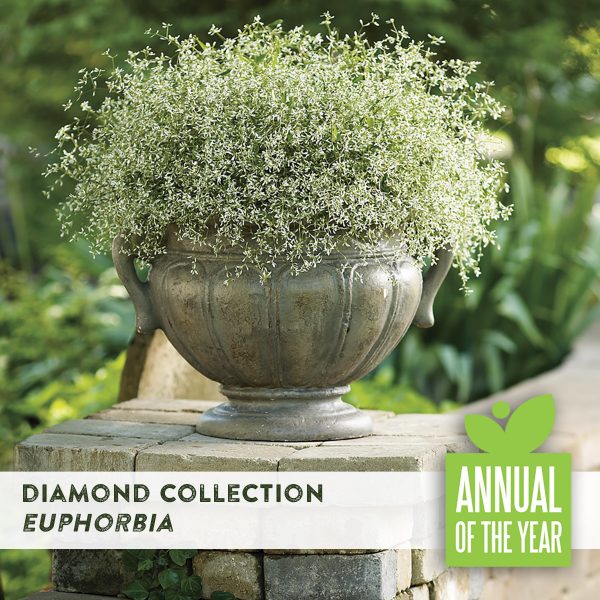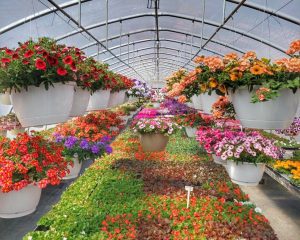PLANT NEEDS
Light Requirement: Part Sun to Sun
Bloom Time: Planting To Frost
Hardiness Zones: 10a, 10b, 11a, 11b
Water Category: Average
Soil Fertility Requirement: Average Soil
Uses: Container, Landscape
Uses Notes
Plant alone or in combinations in all container types and landscapes
Maintenance Notes
Diamond Frost might look delicate and frilly, but nothing could be further from the truth. Diamond Frost is actually pretty much tough as nails. She has performed well from North to South and coast to coast. While she does best in sun or part sun conditions, she does surprisingly well in shady conditions also. As you might suspect she is great in mixed containers and containers by herself, but don’t discount her excellent performance when planted in the landscape. She needs little to no supplemental water and is extremely heat tolerant. She doesn’t need to be deadheaded and shouldn’t need much in the way of fertilizer either – she’s a very self-sufficient gal. While you shouldn’t need to trim her back, you can trim her back at anytime and she will just keep doing her thing. Diamond Frost is one of my all-time favorite plants.
Self-cleaning, no deadheading necessary.
Some shedding of flowers and leaves may occur indoors depending on light levels and watering.
Plants in the spurge family often will bleed a milky, white sap if cut or wounded. This sap is a form of latex. Most people will have little or no reaction due to sap exposure from the euphorbia that Proven Winners sells. However, people with sensitive skin or latex allergies should be cautious when handling euphorbia. Poinsettias are in this same family. If you have ever experienced a skin irritation due to contact with poinsettias you should be cautious with all euphorbia.
An application of fertilizer or compost on garden beds and regular fertilization of plants in pots will help ensure the best possible performance.
Diamond Frost is like your friend who gets along with everyone she meets—it combines easily with many kinds of plants, weaving its wiry stems in and out, poking its single, airy white flowers throughout the combination. Often imitated but never equaled!

